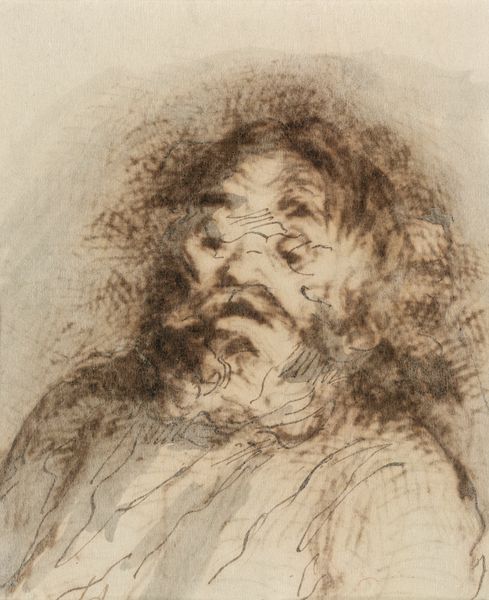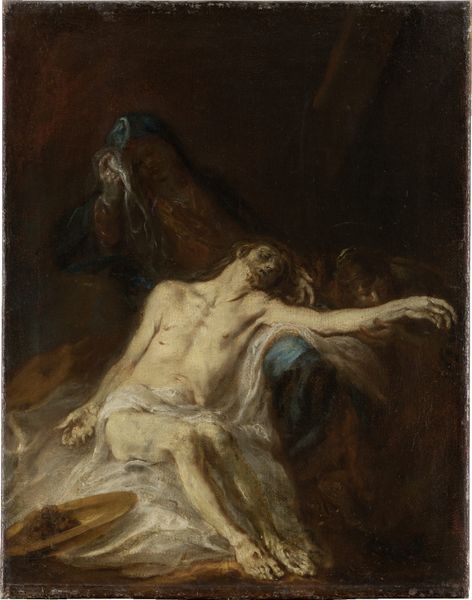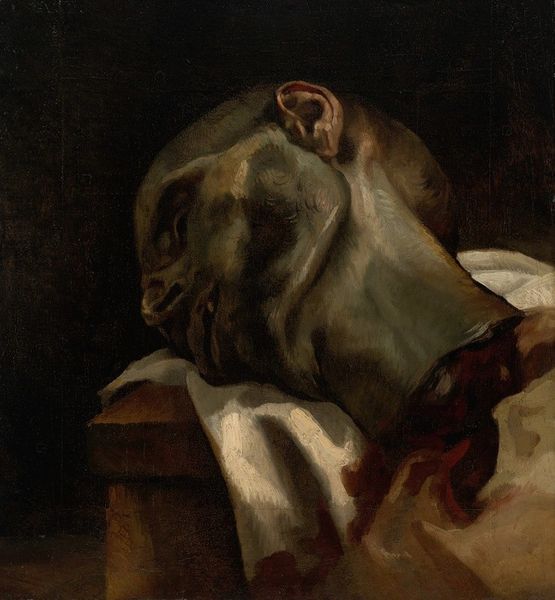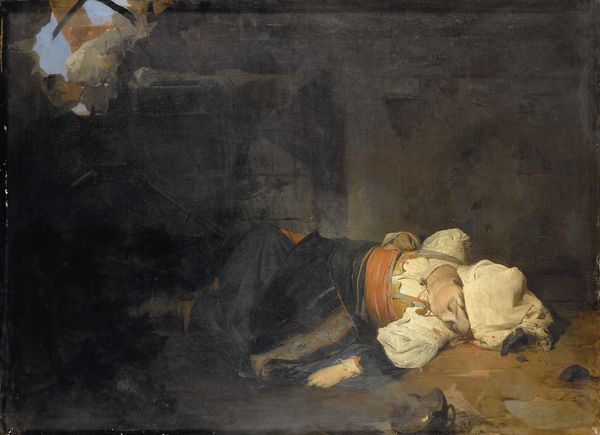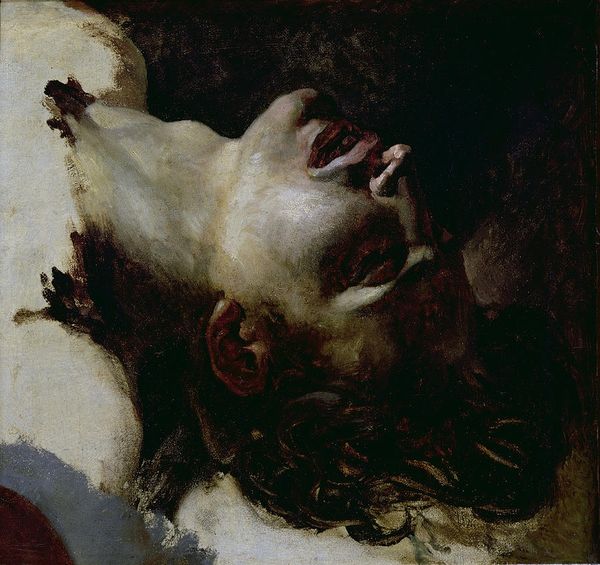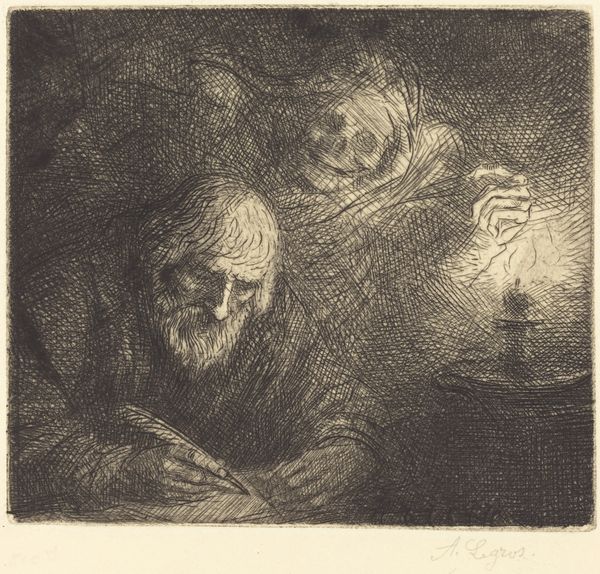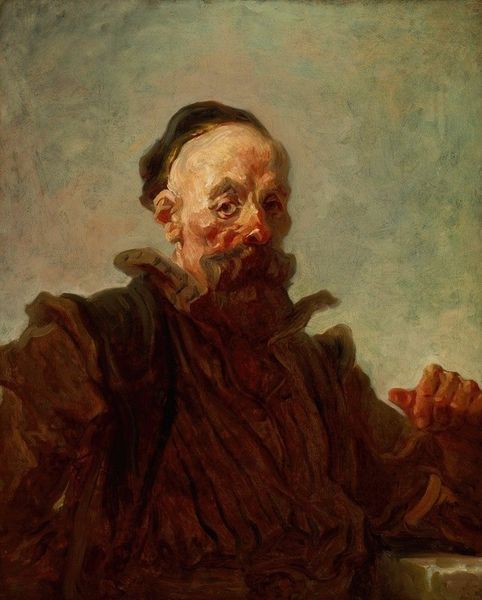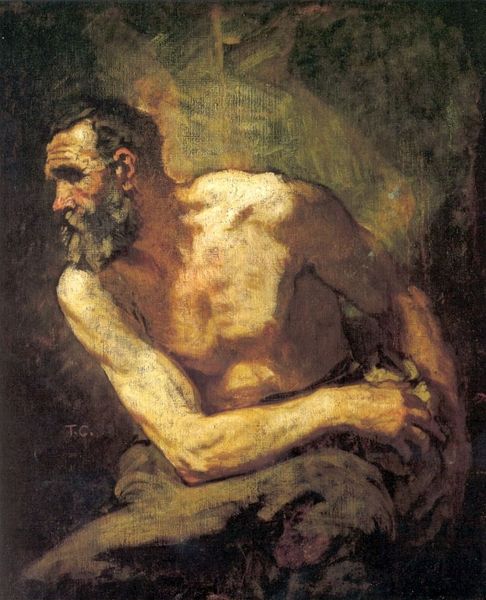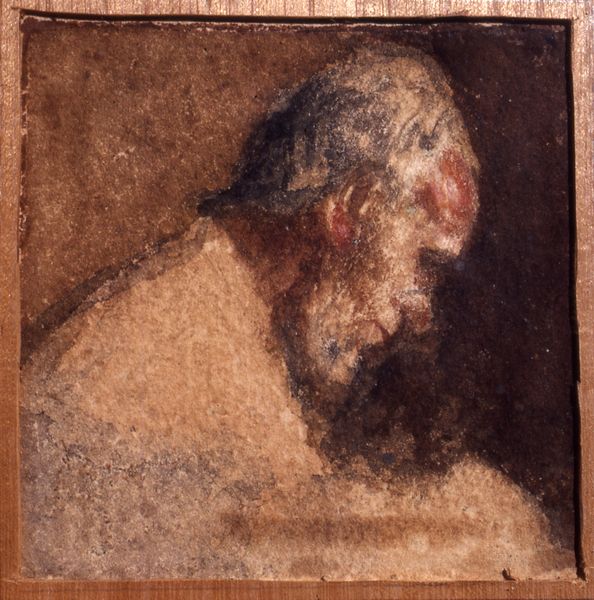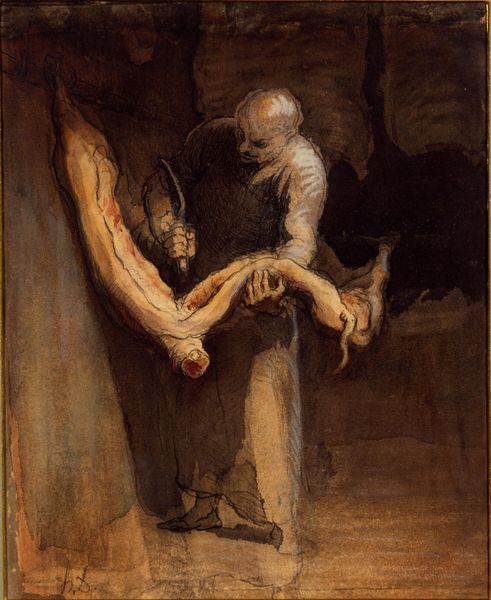
painting, oil-paint
#
portrait
#
narrative-art
#
baroque
#
painting
#
oil-paint
#
charcoal drawing
#
oil painting
#
vanitas
#
portrait head and shoulder
#
chiaroscuro
#
history-painting
Copyright: Public domain
Curator: There’s something intensely immediate about this oil painting from Museo del Prado: "Head of Saint Slit Throat". What do you make of it? Editor: It’s gruesome, isn't it? The stark presentation and shadowy lighting emphasize the blunt reality of violence, almost like a butcher's display. The loose brushstrokes hint at haste or even… revulsion? Curator: Perhaps. The painter, Francisco Herrera, seems deeply invested in a tradition that seeks to remind us of mortality. Death of a saint has a profound place in Baroque iconography; this could very well echo themes of sacrifice and faith through immense suffering. Editor: But what labor went into making this image? We’re talking about paint made of ground pigments, possibly precious, bound by oil, carefully applied layer by layer. A costly, considered object to represent something so… primal? How might it contrast the artist’s own circumstances and patronage at that moment? Curator: The play of light and dark is incredibly evocative. Herrera uses chiaroscuro, a hallmark of Baroque art, to direct our gaze and heighten the drama. It speaks to the saint’s martyrdom and evokes both pity and terror. Consider also that a severed head often represents not just death, but a victory over evil, which is why some interpretations point at John the Baptist's head in specific. Editor: Assuming it is John, there’s the social commentary too: rulers and power structures and their propensity to silence dissent, even to execute it literally. And consider the circulation of such an image, the didactic purpose of displaying the body as a warning? How far does the painting go beyond a symbolic narrative? Curator: A grim topic and yet it seems incredibly human. We read suffering, perhaps a saintly resolve. In the visual language available, it’s less about simple terror, more about communicating the weight of faith in tumultuous times. Editor: Ultimately, all those choices by the painter have solidified this unsettling painting through raw, material presence into the museum collection today, forcing us to confront history, labor, belief and artistic choice. Curator: Yes, the painting leaves us contemplating themes of life, death, and what we are willing to do for our convictions, or not.
Comments
No comments
Be the first to comment and join the conversation on the ultimate creative platform.
